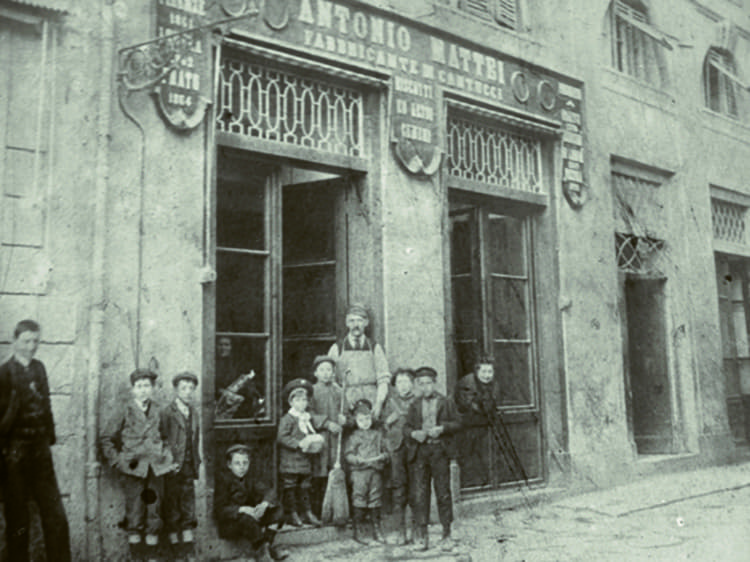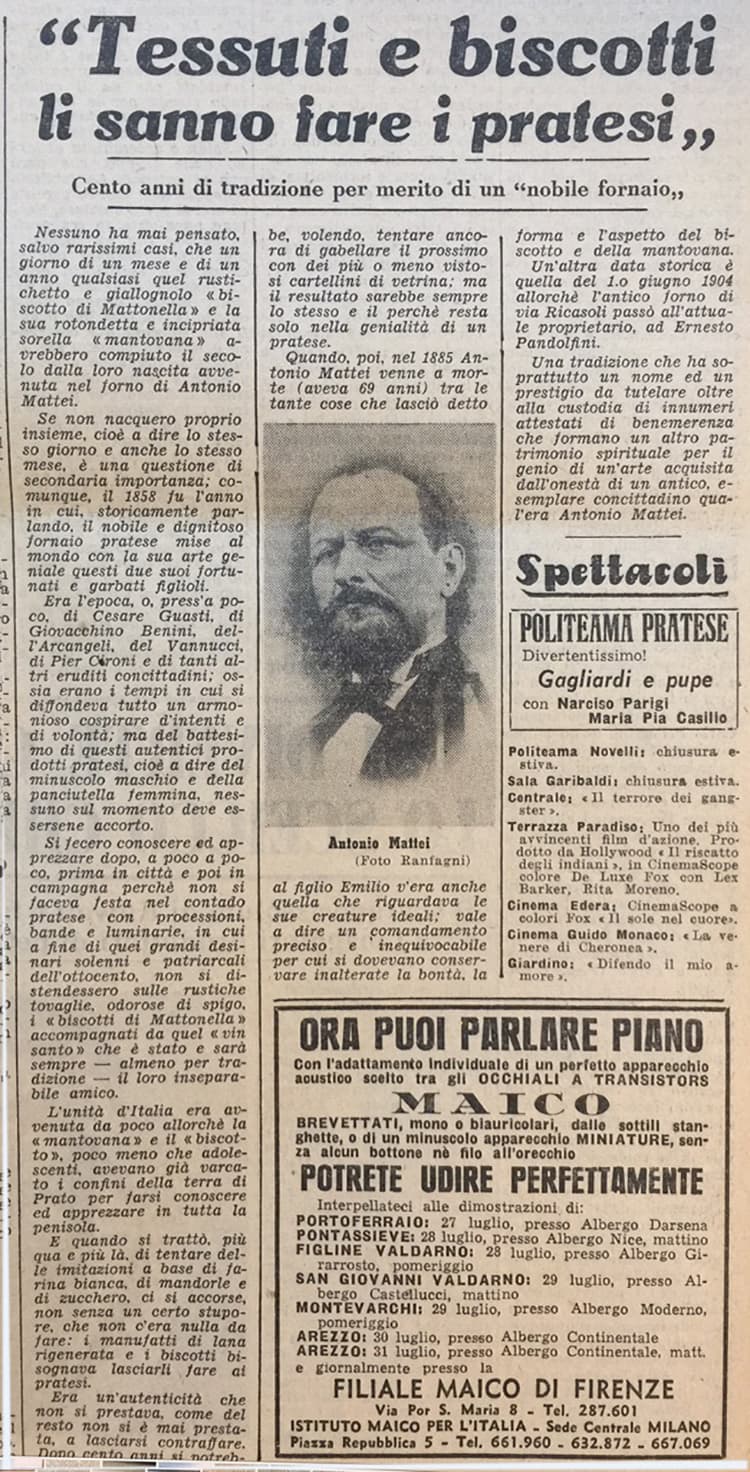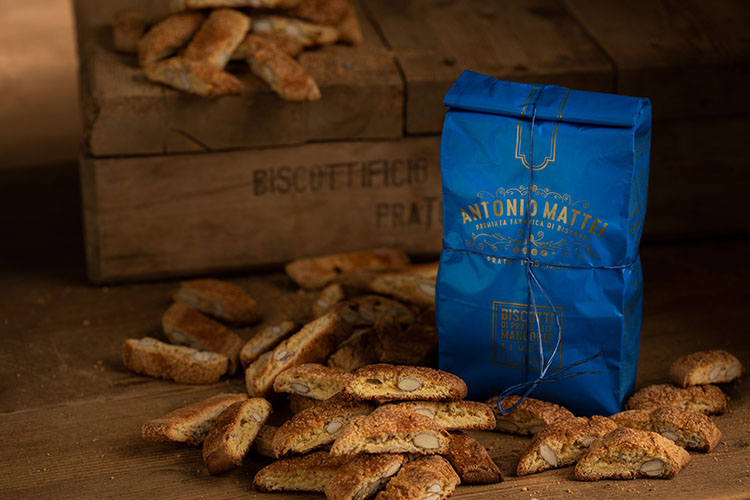Double-linked
In Prato there are two ancient traditions: one linked to textiles and one linked to the production of bread and Prato Biscuits

In Prato there are two ancient traditions: one linked to textiles and one linked to the production of bread and Prato biscuits (which then evolved into a modern pastry shop.) What if I told you that these two traditions have always been linked to each other? You could ask: what do yarns have to do with biscuits, and cantucci? If you have some time and patience... we will tell you all about it!
In an article from La Nazione in 1958, the 100th anniversary of the Biscottificio Mattei was celebrated, the title refers to a saying from Prato at that time: “Only people from Prato know how to make biscuits and fabrics” In it, the writer celebrates the two traditions dear to our city: Prato biscuits (known throughout the world as cantucci or cantuccini) and the textile industry. "And when it came to others here and there trying to make imitations based on white flour, almonds and sugar, we realized, without a shadow of a doubt, don’t even bother trying: regenerated wool and biscuits should be left to the people of Prato to make." (...)

And it is really true, if we consider the fact that in the mid-19th century, most of the Prato population was employed in the textile sector and the other part dealt with ovens, bread and biscuits.
The Prato textile district is still today one of the largest in Europe and has a centuries-old history.
There was not one citizen who did not work in making yarns or fabrics; many had adapted the ground floor of their home as a workshop and the noise of the looms resounded from there. Remnants, bobbins and threads “decorated” and colored the edges of every street. But there is one other thing that we would like to bring to your attention: even if the textile industry is one of the most polluting in the world for various reasons (such as material waste, water consumption, use of plastic, etc.), since the nineteenth century the city of Prato and its citizens have always been attentive to the issues of sustainability and respect for the environment, in fact, by placing the protection of the environment as their main objective, the method of carded wool enabled the territory to become rich.
Recycling is part of the culture of this huge industrial center, which has been able to keep up with the times thanks to continuous innovation. In the early 2000s a special brand was also created: Cardato Recycle made in Prato.
In the green district, 22 thousand tons of "rags" are recycled in Prato every year. They are all processed using the carding technique. BUT... what is carded WOOL?
The second half of the twentieth century was the beginning of the economic boom for the city, due to the scarcity of materials available due to the war, the profession of the cenciaiolo or rag-merchant (already present in the nineteenth century) reached its peak; the "cenciaiolo" sorts used clothing or textile waste and divides them according to color and material, recognizing them simply by touch. A very important process in the regenerated fabric cycle where the hand and the eye of the worker are fundamental. The carded yarns take their name from the main machine used in this type of spinning, which is the card. The card, through metal points and a series of cylinders with different speeds and directions of rotation, manages to “tear” and mix the fibers together, which after having undergone several passages, form a web. Subsequently it is separated into several parts and then spun in another machine, regenerated fabrics are subsequently obtained from the carded yarn. Regenerated yarns and fabrics made in Prato are still exported and sold all over the world today.

The BLUE bag has become a gift for the customers of Prato industrialists, and this is how our biscuits began to "travel". The economic fortune of the industrialists and the city was an important vehicle for the distribution of Prato Biscuits around the world, here is the double thread that binds these two important city traditions.
NB: A wonderful museum has been dedicated to the history of textiles in via Santa Chiara in Prato, there is also a school (Istituto Tecnico T. Buzzi) where the most sought-after textile experts are trained. We have our small Bottega museum on via Porta Rossa in Florence which is dedicated to the history of the Prato biscuits and to the factory of Antonio Mattei. Both museums are well worth visiting !!!